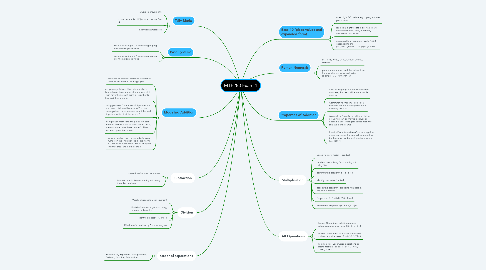MTE280 Exam 1
by Haley Mermaid

1. Tally Marks
1.1. always in groups of 5
1.2. correct example: IIII/ (slash across the first 4)
1.3. incorrect example: IIIIII
2. Base Systems
2.1. Base 2- uses digits 0-1 before regrouping into the next place value
2.2. Base 5- uses digits 0-4 before regrouping into the next place value
3. Modeling Addition
3.1. have lots of different methods in order to cater to all students' learning styles
3.2. using manipulatives- Have students build two different towers, one of 5 and one of 3. Then have them count them all together to find that the sum is 8.
3.3. using pictures- Draw a set of 5 pictures on the board, followed by a set of 3 of the same picture. Have students count them all together to find that the sum is 8.
3.4. using touch math- find the points on each number and have the students count the 5, then continue onto those on the 3. They will end up on the sum- 8.
3.5. using a number line- Have students draw humps on their number line all the way to 5. Then have them draw 3 more. They will find that they land on the sum-8.
4. Subtraction
4.1. minuend-subtrahend=difference
4.2. Models: manipulatives, trading off, using friendlier numbers
5. Division
5.1. Vocab- dividend/divisor=quotient
5.2. Models- Standard algorithm, array, repeated subtraction
5.3. Identity property= 1. 4/1=4
5.4. Division of a number by 0 is meaningless
6. Order of Operations
6.1. Parentheses, Exponents, Multiplication, Division, Addition, Subtraction
7. Base 10 (place values and expanded form)
7.1. uses digits 0-9 before regrouping into next place value
7.2. read from right to left, place values are considered ones, tens, hundreds, thousands, and so on
7.3. expanded form example= Write 4,938 in expanded form: (4*1,000)+(9*100)+(3*10)+(8*1)=4,938
8. Roman Numerals
8.1. I=1, V=5, X=10, L=50, C=100, D=500, M=1000
8.2. putting a roman numeral that is less than the one after it means subtraction (example: CD=400 or IX=9)
9. Properties of Addition
9.1. Closure Property- If a and b are whole numbers, than a+b will equal a whole number.
9.2. Commutative Property- a+b=b+a; numbers can be rearranged without affecting the sum
9.3. Associative Property- (a+b)+c=a+(b+c); groupings can be moved because it doesn't matter what gets added first, the sum will be the same
9.4. Identity Property- a+0=a=0+a; adding 0 to a number means the sum will come out to be the same number as the other addend (ex: 4+0=4)
10. Multiplication
10.1. vocab- factor x factor = product
10.2. models- memorizing facts, trading off, using 10's
10.3. commutative property- a x b=b x a
10.4. identity property= 1 x 4=4
10.5. associative property= grouping numbers in any combinations
10.6. Property of 0- 7 x 0=0, 394 x 0 = 0
10.7. distributive property- 4(8+9)= 4(8)+4(9)
11. All Operations
11.1. Inverse Operations- addition undoes subtraction and vice versa, 8-3=5, 5+3=8
11.2. Inverse Operations- multiplication undoes division and vice versa. 8 x 4=32, 32/4=8
11.3. Fact Families- use inverse operations to create fact families ex: 4+3=7, 3+4=7, 7-3=4, 7-4=3


